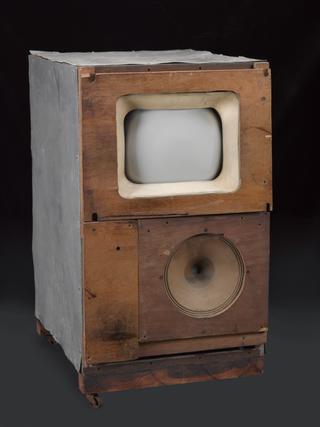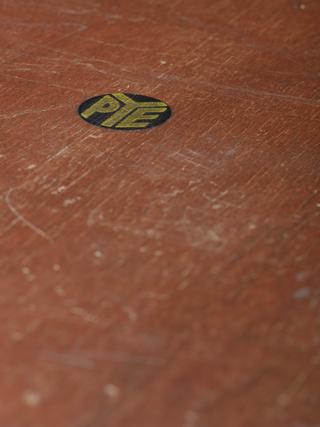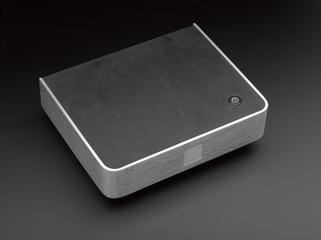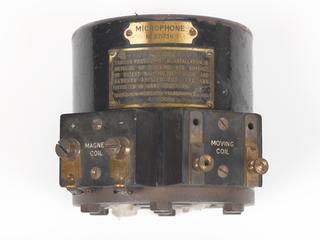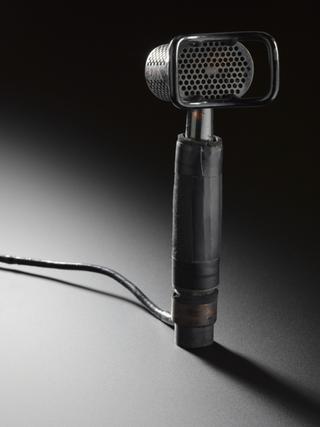




KV-1330UB Trinitron colour television receiver, made by Sony, Japan 1968-70, serial number 023941. This set marked the introduction of Sony's unique Trinitron picture tube technology.
Sony pinned its hopes on the single-electron-gunned Chromatron picture tube, which produced a display six times brighter than the rival RCA three-electron-gun shadow-mask tube. (Until that time the Chromatron had been limited to specialized military use). After considerable development, the new picture tube was named Trinitron - a compound name derived from 'trinity', meaning the union of three, and 'tron' from electron tube. It also marked the beginning of a decline in the UK-based and European television set manufacturing industry. More and more UK and European viewers were purchasing all-transistor sets made overseas, whilst many British manufacturers were relying on less-reliable valve or hybrid valve-transistor internal circuitry. The first Trinitrons like this one intended for the UK market had a PAL decoder that was different from those invented and licensed by Telefunken of Germany, who invented the PAL colour system. It was an 'American' NTSC decoder adapted for PAL.
Details
- Category:
- Television
- Object Number:
- 2016-5019
- Materials:
- wood (unidentified), wood veneer, metal (unknown), plastic (unidentified) and electronic components
- Measurements:
-
overall: 338 mm x 506 mm x 404 mm, 14.92 kg
- type:
- television receiver
- credit:
- Gift of John Trenouth
